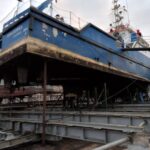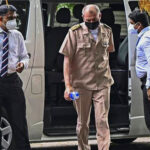During the conflict years, the Liberation Tigers of Tamil Eelam (LTTE) were rumored to have an air wing, though it remained elusive to many. It wasn’t until later that sightings of this air wing were reported sporadically across various locations, leading to the coining of the term “Kurumbatti Mashima” for this mysterious aircraft. The unpredictability of its operations instilled widespread fear, forcing the population to adopt blackouts at night, anticipating potential attacks. Concurrently, the LTTE also developed submarines, both of which were used to create significant psychological and physical impacts during their active years.
In 2000, recognizing the need to enhance its capabilities, the Sri Lanka Navy proposed establishing an air wing. Admiral Cecil Tissera initiated this vision, advocating for the acquisition of an Indian gunboat and two Chetak helicopters. Unfortunately, this visionary project stalled following Admiral Tissera’s retirement,(he is the only Admiral who was promoted before his retirement i think) as subsequent leadership abandoned the initiative, highlighting a recurring issue of discontinuity in national defense projects.
The strategic importance of an air wing extends beyond combat scenarios to critical rescue operations. The tragic incident involving the Devon 5 Fisheries boat underscored the dire need for rapid response capabilities. The absence of a dedicated ambulance boat to provide timely medical assistance resulted in avoidable fatalities, emphasizing the need for aerial rescue assets. Helicopters, capable of rapid deployment and long-range operations, are indispensable for rescue missions far out at sea. Their ability to provide immediate medical aid and transport victims swiftly to medical facilities can save lives. Despite the logistical challenges posed by weather and patient conditions, the benefits of having an air wing are undeniable.
In 2022, a comprehensive concept titled “Boat Rescuer” was introduced. This proposal included the integration of an air wing, portable ICU beds, and the establishment of unmanned aerial vehicles (UAVs) for enhanced maritime operations. However, these initiatives often face setbacks due to a lack of consistent support and recognition. The proposed separation of the Coast Guard from the Navy, operating under a distinct bill, presents a promising development. This move is expected to address the historical apprehensions within the Navy regarding the Coast Guard receiving more attention and resources, ultimately benefiting national security and maritime safety.
A pivotal meeting, chaired by then Defense Secretary Gotabaya Rajapaksa and Admiral Wasantha Karannagoda, discussed bringing the Coast Guard under the Navy. Representing the fisheries Ministry , I opposed this move, arguing that the Coast Guard’s integration with the Navy would hinder its development. Indian Coast Guard has taken 28 yrs to move out from the Navy ,stated by the commandant of the India Coast Guard .Despite facing significant opposition from senior officers like Admiral Thisara Samarasinghe, Vice Admiral Susith Weerasekera, Rear Admiral Illankoon and Admiral Jayanath Colombage, I stood firm. The decision was influenced by personal interests, as then fisheries secretary’s son was seeking a position in the Navy through KDU.
However, the situation has evolved, and it is now imperative to recognize the importance of an autonomous Coast Guard. Such a body is crucial for responding promptly to maritime emergencies and ensuring the security of our waters. Understanding this, I believe it is time to revise the existing regulations to empower the Coast Guard as a separate entity dedicated to maritime safety and security.
The need for an air wing in the Sri Lankan Navy is not just a strategic necessity but a vital component for ensuring timely rescue operations and enhancing overall maritime security. The consistent push for these advancements, despite the challenges, reflects a commitment to improving the nation’s defense capabilities and safeguarding its waters.
Aspirations are not strategies.
Ayesh Indranath Ranawaka
Editor in Chief oceanlust magazine
ocean 1 st by oceanlust






Leave a Reply